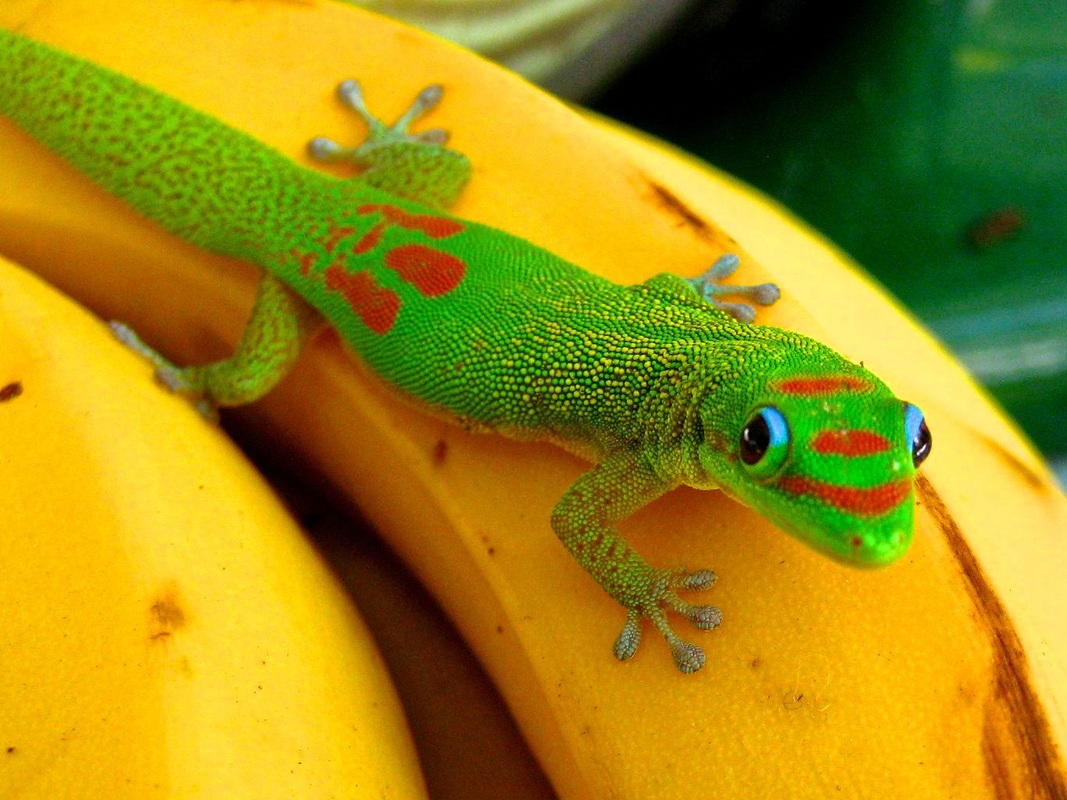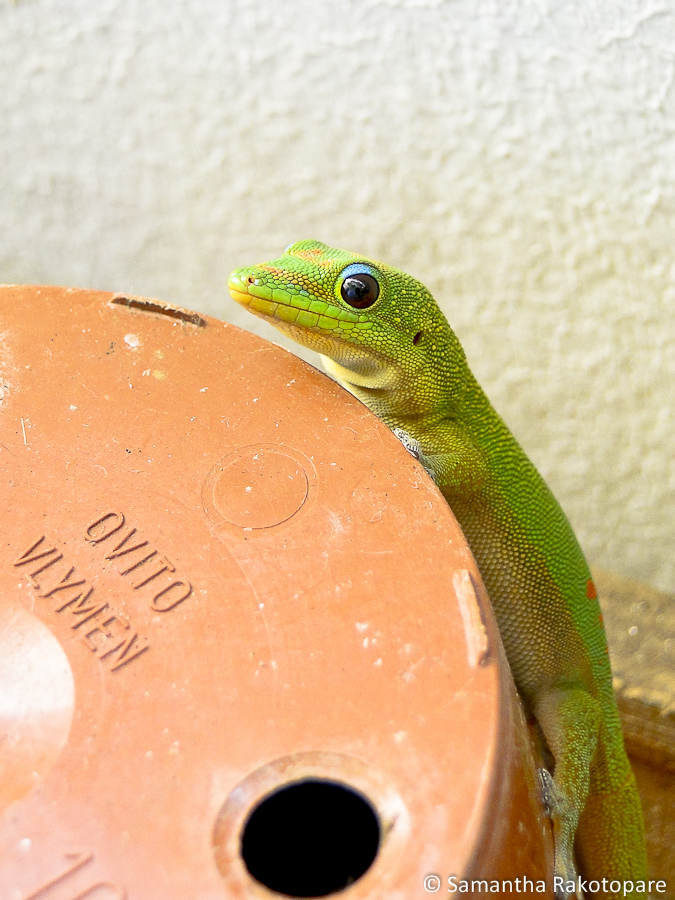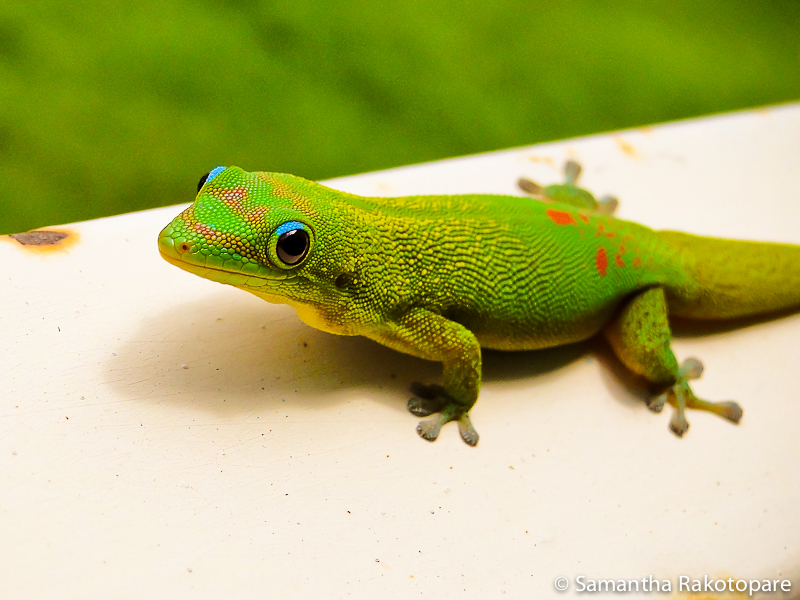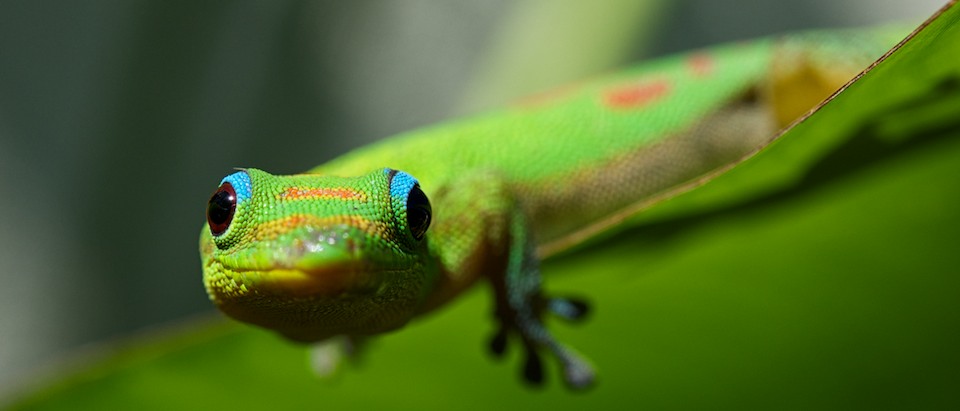Adaptation
 Phelsuma laticauda is a
Phelsuma laticauda is a
small gecko, measuring
54.8 mm
as an adult male
and 50.6 mm as an adult
female. They have very
unique coloration, consisting
of
shades of yellow-green,
blue and red. The main body
and tail of
the Gold Dust Day
Gecko is a vibrant light green,
with small,
yellow spots
speckling the area. Near the
back legs on the body
there is
a bright, light blue patch lightly
speckled with yellow
coloration.
Photo courtesy of
Sarah R.
Nichols
This blue coloration also appears on
the feet, near
the eyes, and just above the mouth. Some males have a blue
colored tails; however this is typically rare, as it is normally green with yellow spots.
On the mid-section of the P. laticauda there are three
teardrop-shaped patches of red spread laterally. Two red stripes
also appear going across its face, one forming the shape of a
“V” just before the eyes, and the other goes horizontally in
between the eyes. On occasion, the Phelsuma laticauda will have
a third red stripe going horizontally just behind the eyes
(Saenko, S.V., Teyssier, J., van der Marel, D., and M.C.
Milinkovitch, 2013).
 The Gold Dust Day Gecko has four toes, uniquely designed to grip
flat and vertical surfaces such as trees. Their foot adaptations
allow them to climb vertically to avoid ground predation,
and to find food such as fruits, nectars, and insects. Their
lack of teeth makes fruit and nectar an ideal diet, while still
allowing the gecko to consume small insects whole. Their general
green coloration allows them to blend in with the vegetation and
leaves of the bamboo, palms, and banana trees (Van Heygen, E.,
2004).
The Gold Dust Day Gecko has four toes, uniquely designed to grip
flat and vertical surfaces such as trees. Their foot adaptations
allow them to climb vertically to avoid ground predation,
and to find food such as fruits, nectars, and insects. Their
lack of teeth makes fruit and nectar an ideal diet, while still
allowing the gecko to consume small insects whole. Their general
green coloration allows them to blend in with the vegetation and
leaves of the bamboo, palms, and banana trees (Van Heygen, E.,
2004).
Both photos courtesy of
Samantha Rakotopare
The Phelsuma laticauda can sense changes in its environment through sight; however, this is not its primary form of sense. It often feels movement and vibrations of nearby animals through its body, most specifically its feet. Its sense of smell is essential to this gecko, as animals often leave scent markings outlining their territory, and also to alert it to any potential predators in the area. Additionally, it can sense environmental changes such as temperature and precipitation through the sensory receptors in the gecko’s skin (Van Heygen, E., 2004).
